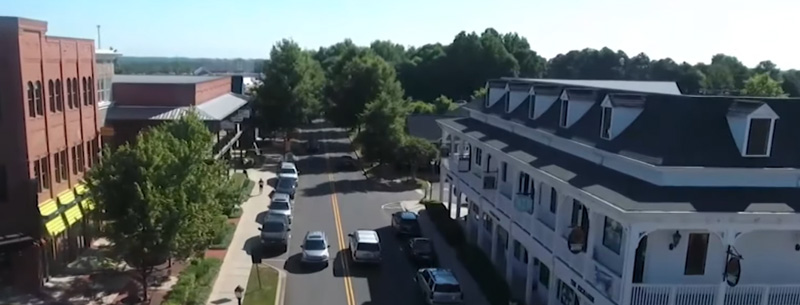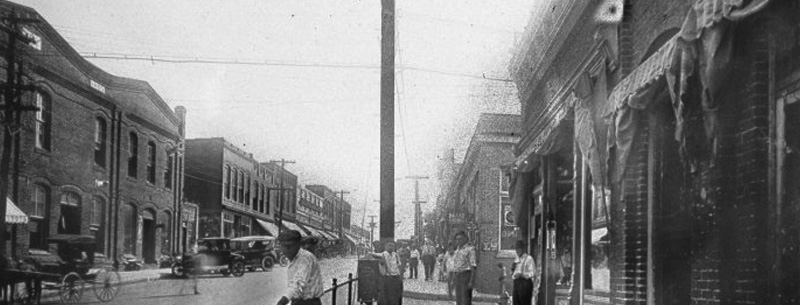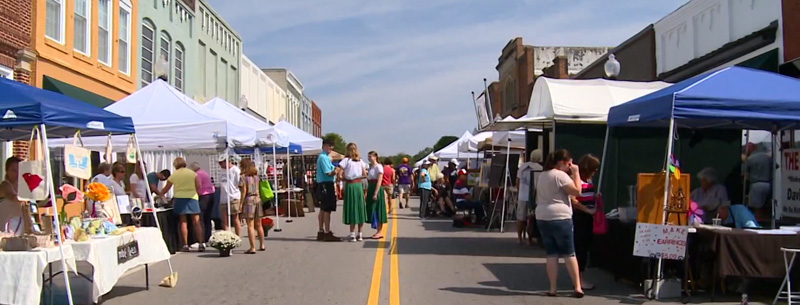Explore Fort Mill SC
As you stroll through historic Fort Mill downtown, you’ll feel like you’ve stepped back in time. Many of the buildings on Main Street were built in the late 19th Century and provide evidence of the business district’s growth during this period in time.
Fort Mill gets its name from a British colonial-era fort and a grist mill on nearby Steele Creek. The Catawba Indians made their home in Fort Mill for many years until the Scotch-Irish settlers arrived in the 1750s and 1760s, and a small settlement soon developed. Fort Mill proliferated in the late 1800s as textile mills were established.
You are invited to explore the thriving community of Fort Mill, South Carolina. While retaining its small-town atmosphere and charm of the Old South, Fort Mill has the advantage of being only minutes away from Charlotte, North Carolina, and Rock Hill, South Carolina.
Fort Mill Community
Fort Mill SC, has become one of the hottest properties in the greater Charlotte, NC area. Fort Mill is one of the fastest-growing towns along the I-77 corridor in the northernmost part of South Carolina. Residents of the community enjoy a high quality of life and a strong sense of community. The Fort Mill Schools are among the finest in the state and perform in the top tier nationally. Proximity to the Charlotte metro area makes Fort Mill a desirable destination for numerous thriving firms and corporate offices and offers numerous educational, recreational, and employment opportunities.
Where is Fort Mill, South Carolina?
Confederate Park & the Bandstand are the principal points of interest in downtown Fort Mill. Both have been the scene of political rallies, weddings, concerts in the park, and all manner of events that showcase life here.
About a quarter of Fort Mill downtown is dedicated to Confederate Park. The people of Fort Mill raised funds to build a “Temple of Patriotism” to honor those who served in the Civil War.

That spirit of cooperation is still evident today. The historic Spratt Building, a former bank, is now Fort Mill’s community and civic center, where people can gather to celebrate with families and neighbors.
Faith is just as important. Fort Mill has many churches. One of the most notable is Unity Presbyterian Church, the oldest church in eastern York County. It was organized in 1788. The church is one of 11 buildings in the Town of Fort Mill on the National Register of Historic Places.
Much of Fort Mill’s growth is attributed to the railroad. In 1852, the Charlotte, Columbia, and Augusta Railroad first traveled through the area, stopping at the railroad station. Trains still rumble through downtown.
While fleeing from Richmond, VA in 1865, the Confederate Cabinet passed through the area. Its members spent three days and nights at Springfield, which is located on U.S. Highway 21. The last meeting of the full Confederate Cabinet was held at the White Homestead in downtown Fort Mill.
Textiles and the railroad brought prosperity, and Elliott White Springs — World War I flying ace, best-selling author, eccentric, and Springs Industries patriarch – brought prominence.
Downtown Fort Mill is now home to thriving antique markets, gift shops, restaurants, spas and salons, and professional offices.
Family Activities in Fort Mill
Year-round, the residents of Fort Mill come together in downtown Fort Mill to celebrate with family and friends.
The first weekend of every May, Fort Mill puts on Springfest, a family-oriented celebration of spring. This event is held in Walter Y. Elisha Park on North White Street. There’s always great entertainment, lots of locally prepared food, and children’s activities.
Fort Mill Thunder roars into downtown in late May, or early June, for a car show family festival! This is held on North White Street and is just one of the events sponsored by Move Fort Mill Forward throughout the year. Over 100 car enthusiasts participated in the event. There’s also a display of specialty cars, live entertainment, great food, and always something for the children!
Each Fourth of July, re-enactors man the still-working cannons in Confederate Park, firing off a volley that rattles windows throughout downtown.
Art on Main, a fine art and master craft festival, is held the second weekend in October each year. Artists and master craftsmen line Main Street to market their beautiful works of art! There’s a special display of artwork created by our talented student artists. Local non-profit organizations serve up food along with our local downtown restaurants and there’s live entertainment on the bandstand in historic Confederate Park!

The annual Fall Festival features trick or treating on Main Street for local children, as well as an opportunity to help children’s organizations.
In election years, the Last Chance Candidates Challenge is held on the bandstand in Confederate Park. This event, like the old-fashioned stump speeches of years passed, provides the citizens of Fort Mill the opportunity to listen, ask questions, and get to know the candidates they will be electing. All candidates running for public offices that represent the Fort Mill township are invited to the event, which is usually held the Saturday before the November election day.
Fort Mill SC Arts
Indulge in local arts year-round. The Art Mill located on Main Street is home to the Fort Mill Art Guild. Member artists display their work throughout the year and numerous special events held at The Art Mill are open to the public. On the fourth Friday of each month from 6 – 8 pm, there is an event at The Art Mill and you can shop and dine at many of the merchants on and near Main Street.
The Fort Mill Community Playhouse performs comedy and drama throughout the year.
Carolina Crown Drum and Bugle Corps is a Fort Mill-based group comprised of students aged 15 to 21 from all over the United States. A world-class drum and bugle corps, Carolina Crown travels throughout the country and performs in front of tens of thousands of people each year.
History of Fort Mill SC
Highlights in Fort Mill’s history include:
- Jefferson Davis and the Confederate Cabinet passed through the area in their flight from Richmond in 1865. The last meeting of the full Confederate Cabinet was held at the White
Homestead in Fort Mill. - Main Street, circa 1900s. Photo courtesy of Fort Mill Times. Fort Mill was the home of Elliott White Springs, WWI flying ace, author, industrialist, and South Carolina Hall of Fame member.
-

What is Fort Mill SC known for? In the mid-1700s, Thomas Spratt and his wife Elizabeth traveled through upper South Carolina in their wagon. They spent a night among the friendly Catawba Indians and were invited to stay and live in the area on a large tract of land given to them. They became the first white settlers in the Fort Mill area, and their descendants still live here. The same spirit of friendliness and hospitality still exists today.
From the resort community of Tega Cay to the small-town charms of Fort Mill to the unspoiled rural stretches of Indian Land, people are finding it the ideal place to call home. It’s no wonder that Fort Mill Township has a rich history that animates the community.
Much of the area’s history stems from the Catawba Indians, the only surviving Native American tribe in South Carolina.
At one time, 30,000 Catawbas roamed this area. Unfortunately, few records exist about the tribal nation before 1760, when smallpox and other European diseases diminished it to 1,000. The oldest artifact dates to about 600 A.D.
In 1763, the English “gave” the Catawbas 144,000 acres-land originally theirs anyway-as a reward for helping them defeat the French in the French and Indian War. That reservation sprawled the township, originally called Fort Hill, and Indian Land. The Catawbas began leasing that land to settlers soon afterward, renting between 30 and 1,000 acres each.
Both settlers and Catawbas used the ancient Nation Ford Road, which dates back to at least 1650, to travel and trade from Pennsylvania to Charles Towne (now Charleston). The trail passed through the Catawba Nation’s five villages and crossed the Catawba River, where the railroad trestle now exists.
Parts of the trail can still be seen, especially on the Anne Springs Close Greenway.
Settlers opened a post office in 1820. By 1826, the Catawbas had rented all their land out, an event that forced them off their reservation. In 1840, the Catawbas signed the Treaty of Nation Ford and sold the land to the state, which ended their control over this area.

Because there was another Fort Hill in South Carolina, settlers changed the name to Fort Mill around 1830, after an old grist mill near Steele Creek and a small garrison fort built by the British in the 1750s, just south of the town limits.
In 1852, the Charlotte, Columbia, and Augusta Railroad first traveled through the area with a station in Fort Mill. The trestle over the Catawba River, built in 1851, burned down during an 1865 Civil War skirmish and was rebuilt a year later.
Jefferson Davis and the Confederate Cabinet passed through the area in their flight from Richmond in 1865. The last meeting of the full Confederate Cabinet was held at the White Homestead near downtown Fort Mill. Thirteen years later 1873, Fort Mill received its charter as a town.
In 1887, Samuel Elliot White founded the Fort Mill Manufacturing Co., a textile business. A second mill was built five years later, which paved the way for Springs Industries, the area’s main employer, for generations. White’s great-great-granddaughter, Crandall Close Bowles, is now the fifth generation to run the textile giant as both chief executive officer and chairman of the board.
The following sites in Fort Mill are listed on the National Register of Historic Places: Springfield Plantation (before 1806), White Homestead (1831), Fort Mill Downtown Historic District (17 buildings built between 1860 and 1940), Wilson House (c. 1869), Banks Mack House (c. 1871), John M. White House (1872), Thornwell-Elliot House (c. 1877), Mack-Belk House (c. 1890), Mills House (1906), National Guard Armory (1938) and Unity Presbyterian Church Complex (church, manse, Unity Cemetery, Old Unity Cemetery).
Historic Downtown Fort Mill
Walk through Fort Mill’s historic downtown and step back in time. Some of the buildings on Main Street date back to the late 1800s and provide evidence of the growth of the business district during this period in time.
The Catawba Indians made their homes here for many years. In the mid-1700s, Thomas Spratt and his wife, Elizabeth, traveled through upper South Carolina in their wagon. They spent a night among the friendly Catawba Indians. The Catawbas invited the Spratts to live in the area, offering them a large tract of land to settle. They became the first white settlers in the Fort Mill area, and their descendants still live here.
Both settlers and the Catawbas used the ancient Nation Ford Road, which dates to at least 1650, to travel and trade from Pennsylvania to Charles Towne (now Charleston, SC). The trail passed through the Catawba Nation’s five villages and crossed the Catawba River, where the railroad trestle now stands.
Scotch-Irish settlers began arriving in the 1750s and 1760s, and a small settlement soon developed. Fort Mill grew rapidly in the 1800s as textile mills were established.
The town gets its name from a colonial-era fort started but never finished by the British and a grist mill on nearby Steele Creek.
Even though that mill has long since been reduced to a few foundation stones, Fort Mill has many historic and interesting places to visit. It also has a unique perspective on neighborliness that survives to this day. The original fort, for example, was intended to protect the Indians.
